
Homesteading 101: The End of Summer Blues
Small garden successes and failures, and some great foals!
I got up at 2:00 AM to record more audio for the audible book (PsyWar). This recording task chews up a lot of time, but it has to be done ASAP. I have to record at night to minimize outside noise so that the recording is clean. So, my plan for the rest of the day is to take a nap…
The summer has flown by with travel, farming, gardening, and rebuilding the barn and office “agricultural center.” But fall is here, and with it, the last hurrahs of the summer gardens. Now, the potted annuals are looking peaked, the vegetable garden has gone past its prime, and the nights are starting to chill down.
Today I wanted to update you on our farming and gardening activities.
Below are some photos from yesterday of the successes and failures of the farm this summer.
What worked:
The hoops and netting on the raised beds were a huge success.
Below is our sweet potato, pepper, and Swiss chard bed:
I predict we have at least 50 to 100 pounds of sweet potatoes in that soil!
It's hard to see, but there are also pepper plants in that mound of plant matter. Just move back the greenery, and behold! There are poblanos, Anaheims, bell peppers, and pimentos—tens of pounds of them! Jill plans to dehydrate and freeze them all soon. We have been eating peppers in just about everything she cooks lately.
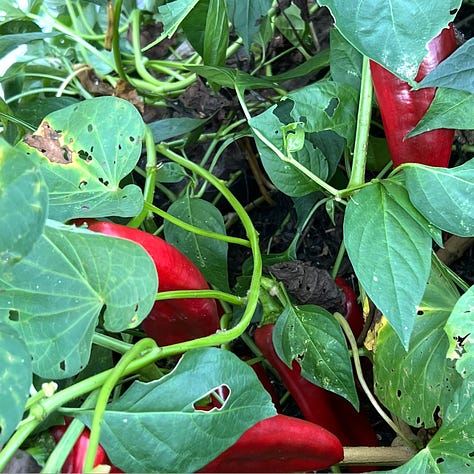
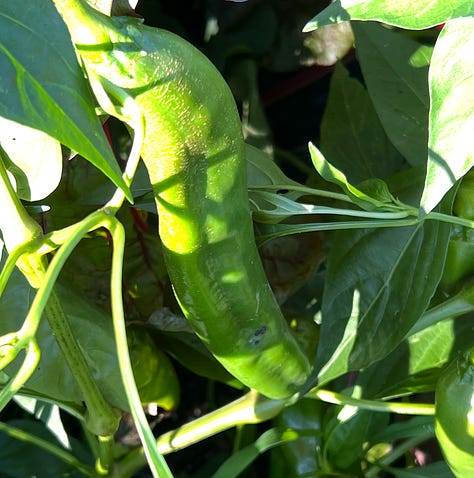
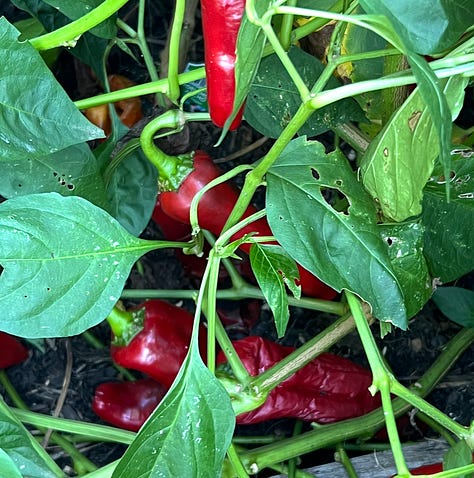
However, the other raised bed grew way more cucumbers than we could harvest - as we were somewhere in Greece or Portugal or Italy when they came ripe - almost all at once. In the end, we ate some but wasted a lot. As in, 30-50 pounds gone to waste. It's not a pretty site. Looks like the chickens are going to feast on past-prime cucumbers.
This bed will soon be cleared, hand-tilled, and seeded with lettuce. Jill might also use the aero garden to start some lettuce seeds, giving the plants a good jump start.
The tomatoes did great and had very few issues with the usual stuff that gets tomato plants. This year we planted various cultivars of large heritage beefsteak type, cherry, and Italian plum tomato plants. We let the plants cascade off the raised bed they were planted in but hardly staked them up, which worked like a charm. For some reason, we have not had any tomato caterpillars this year. I put down a 100 pounds of Bacillus thuringiensis galleriae (Btg) last winter all around the gardens, a bacterial strain that produces a toxin that affects Japanese beetle adults and larvae. Maybe it also affected the larvae of the tomato caterpillar?
For those that don’t know, a tomato caterpillar is an up to three-inch long, fat, juicy caterpillar - that makes a terrible splat when stepped on. They are just plain gross.
There is a wasp that lays its eggs and feeds off the caterpillar when they hatch, which is local to our area. These wasps will kill these nasty pests—it really is disgusting, but it works as a natural deterrent. Last year, I did leave the wasps on the caterpillars as suggested via an internet search (LOL) so that we would get more wasps this year. Maybe that also helped?
Seeing this in person is a level of yuck -that horror movies can only rival.
Of note, this is what the above caterpillar will morph into. A big, beautiful creature.
Moving on:
The big failure was this monstrosity. We couldn’t keep up with the weeds in one of our beds - and it got just “a little” out of hand.
Soon to be hoed, cleared, and tilled over. It will be interesting to see how many sweet potatoes are lurking in the soil - as there are a number of viable vines within that jungle.
The annuals were lovely, and the herb pots did super well. Pictured are sage, mint, thyme, limes, lemons, basil, and marigolds—which are still blooming. Jill will be harvesting more soon. She just picks the leaves, puts them in brown paper bags, and hangs them in a closet until the leaves are dried. Then she packs or grinds and packs the herbs into little jars. Jars of herbs make excellent Christmas or housewarming gifts.
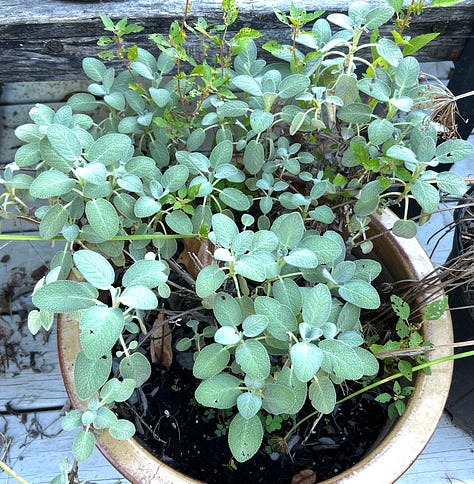
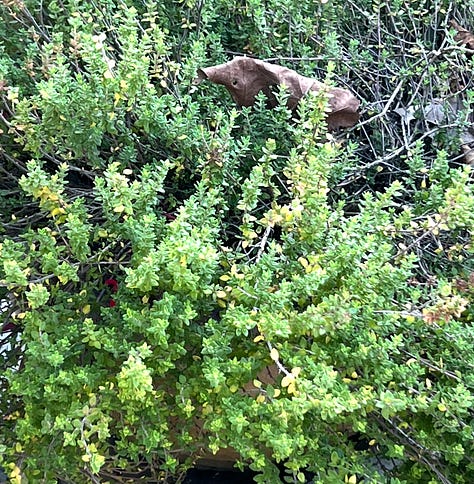
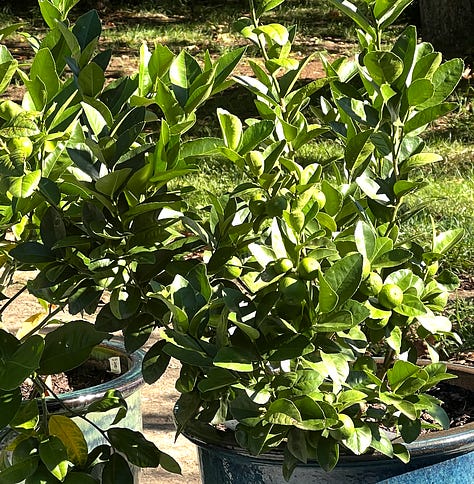
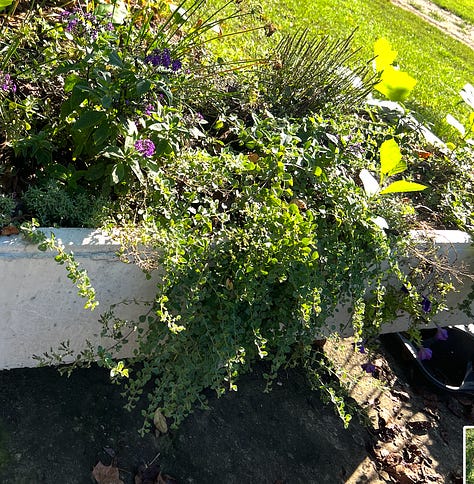
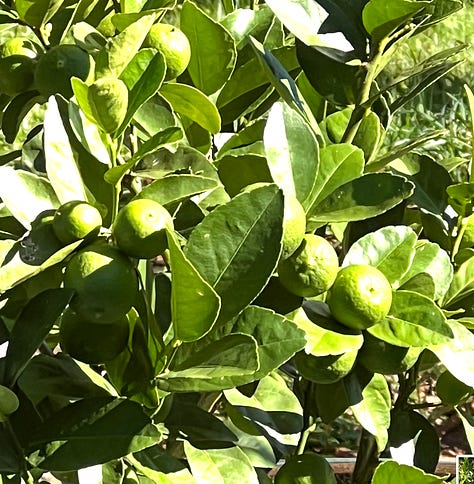
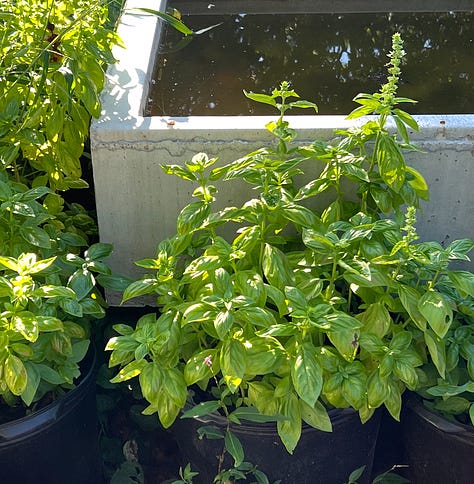
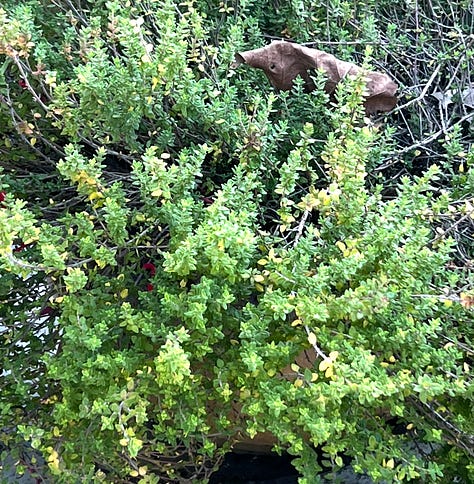
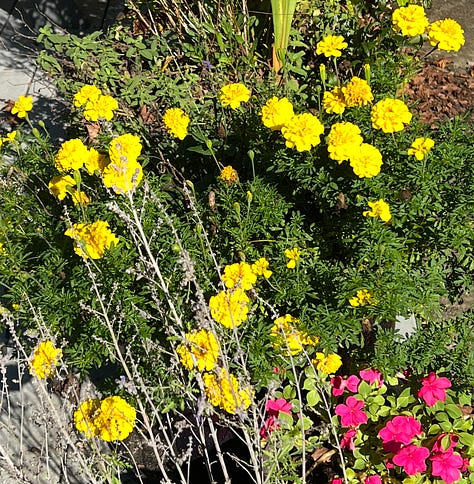
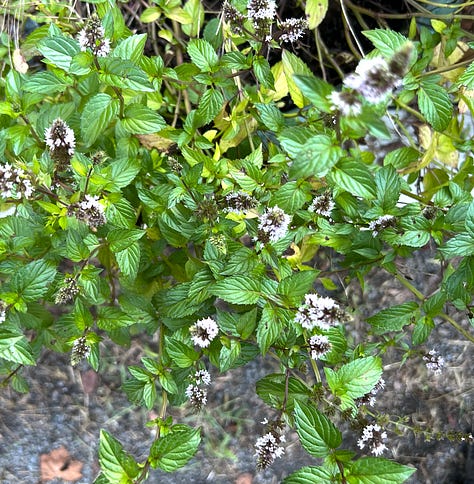
The lemon and lime trees are thriving. As are the olive and banana plants (trees?). Soon all of these tropicals will have to be moved into the greenhouse for the winter.
Another failure this year was the bean crop. Yep - the homemade bamboo cage that Jill made was supposed to be the scaffolding for some Italian runner bean plants. The plants did sprout but they just never thrived. Was is the climate here? Too wet? Too humid? The soil’s Ph? Maybe they weren’t happy in a large pot? Who knows why they failed to thrive, but they did. With gardening, it is a constant experiment.
Baby horse season is upon us. Four have been born in the last month, with one more to go. Waiting, waiting …..
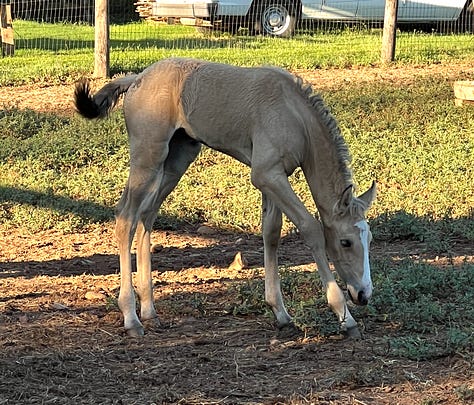
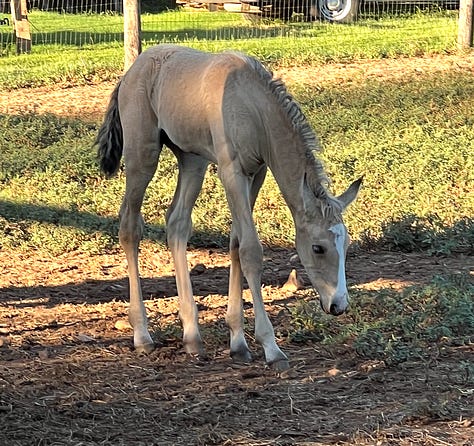
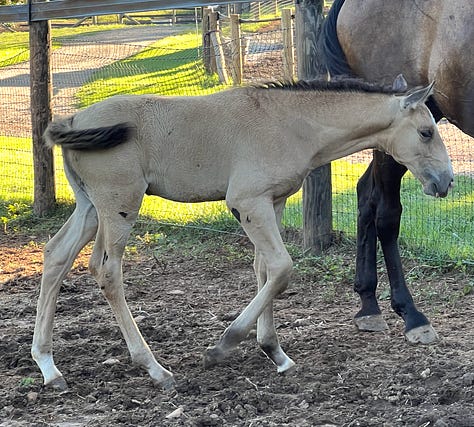
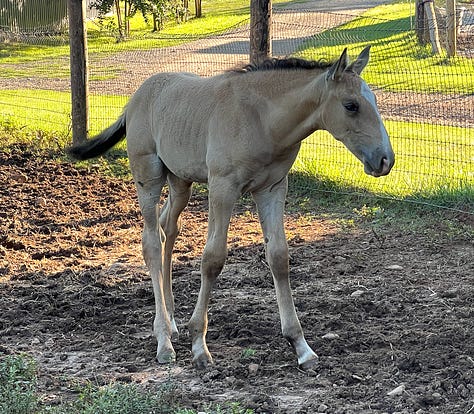
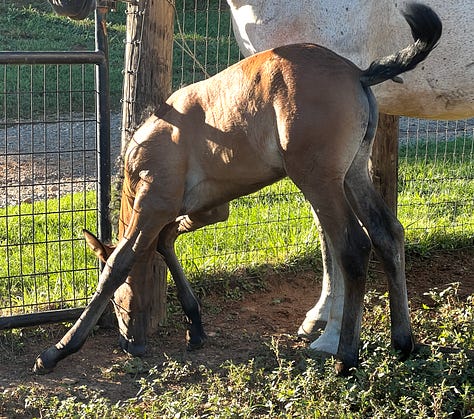
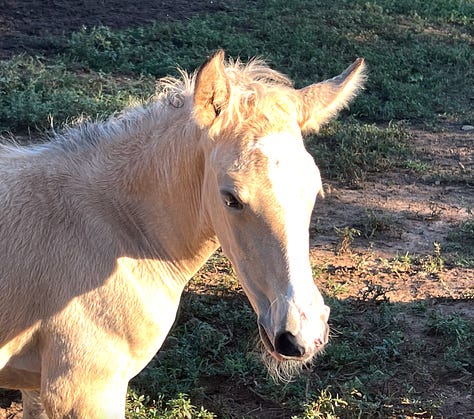
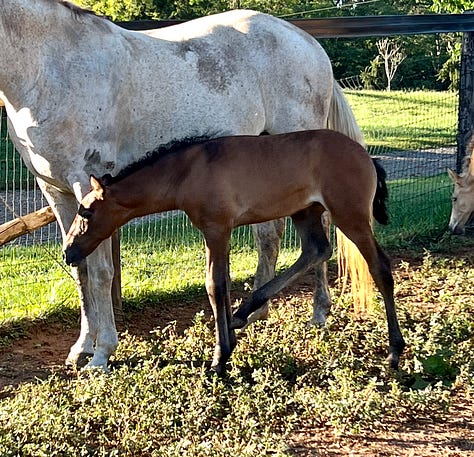
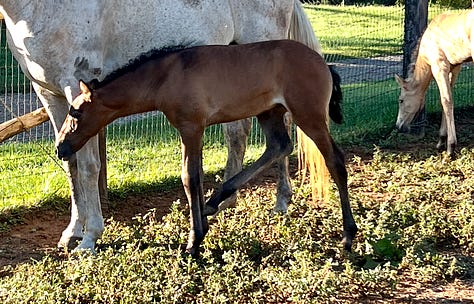
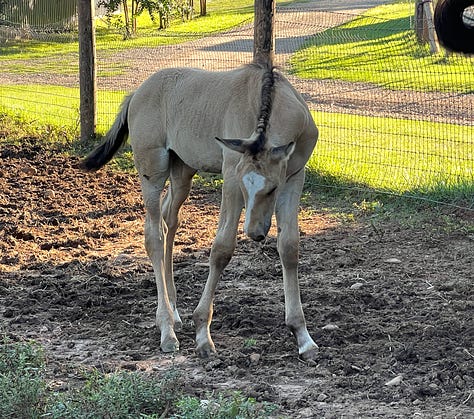
We are delighted with the foals that have dropped so far, and will keep at least one filly and one colt. This is the first year of foals for our junior stallion “Onasis,” and as expected, so far his foals are very modern but not as large as the Jade foals.
The foundation mares “Caranja” and “Tantra” once again dropped great buckskin foals by Jade, and for the first time, we have a buckskin filly out of “Tantra.” That one is definitely a keeper. “Caranja” dropped a very nice, tall buckskin colt. “Caranja” was our original mare, and is getting a bit aged now. Not sure how many more foals she will give us. She is slowing down a bit, and we noticed that there has been a subtle shift in the “pecking order” among the mares. “Caranja” is no longer dominant over the whole mare herd- her daughter “Tantra” is now boss mare. A classic example of the daughter ascending to assume the status of her dam.
This month, we sold two yearlings. Selling horses is a time-consuming project and one that Jill, who does the bulk of the selling, hates. We must take tons of photos and videos, edit them, and get the content online on social media and advertising sites, field emails, phones, and texts. Then, entertain potential buyers, often arrange for a pre-purchase exam, arrange for a Coggins test for EIA (a very rare, infectious disease that is transmitted through horseflies) for shipping, and get a health certificate from a vet for shipping, etc. After that, we have to transfer the registration (another aspect of horse breeding that requires that we microchip and DNA test the youngsters, before registration) to the new owners.
Breeding horses is the (almost) easy part; finding buyers and registering the horses is much more difficult!
But that is part of the specialty farming business, which is essentially what we do. It is a niche market that requires many hands-on interactions with buyers, veterinarians, and the Portuguese Registry Association. Facebook has traditionally been the place where we find the most customers. Jill has about 3,5000 followers on FB, and almost all of them are related to horses. However, due to Jill’s “association” with me, her Facebook posts have been heavily censored. She went from hundreds of people seeing her horse posts to a handful almost overnight about three years ago. This has made it all the more challenging to sell our foals, as Facebook dominates the equine social media scene. Thanks, Zuck. That said, the horse market has also been severely impacted by the hard economic times over the past three years.
“Do your homework”
Many homesteads and small farms specialize in a specialty market. To do this, requires becoming an expert in that type of animal, plant or plant product and the market for that product.
These specialty markets are the ones where small farms can be profitable. However, they require a lot of upfront homework to understand the dynamics of the business. And yes, it is a business.
Presently…
Today, we have a team of men here digging a new water line for the barn/office and installing a new septic system for the same rehabbed building. Because of all the large rocks that appear to have been buried when the farm was a quarry way back in the 1960s, we hired a person with a mini excavator instead of using a trencher (ditch-witch) to dig the water lines.
The last person who dug a trench for us, swore he would never be back - as he broke too many teeth on his trenching bar. So, for today - we are periodically without water. I hope they finish the job before this evening!
Of course, Gonzo the Goose and Gizmo the Emu supervise everything and hang out with whoever is working outside. However, both have been known to sleep on the job
Summer was just too short this year, although truth be told - fall in Virginia is the best with cool nights and warm days.
Life is good.
“And the sun took a step back, the leaves lulled themselves to sleep and autumn was awakened.” — Raquel Franco

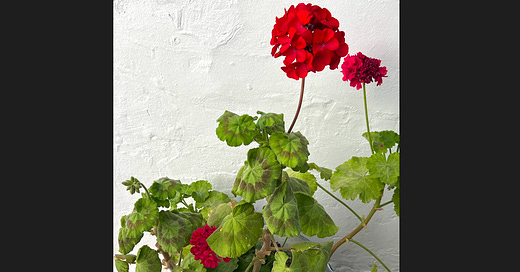



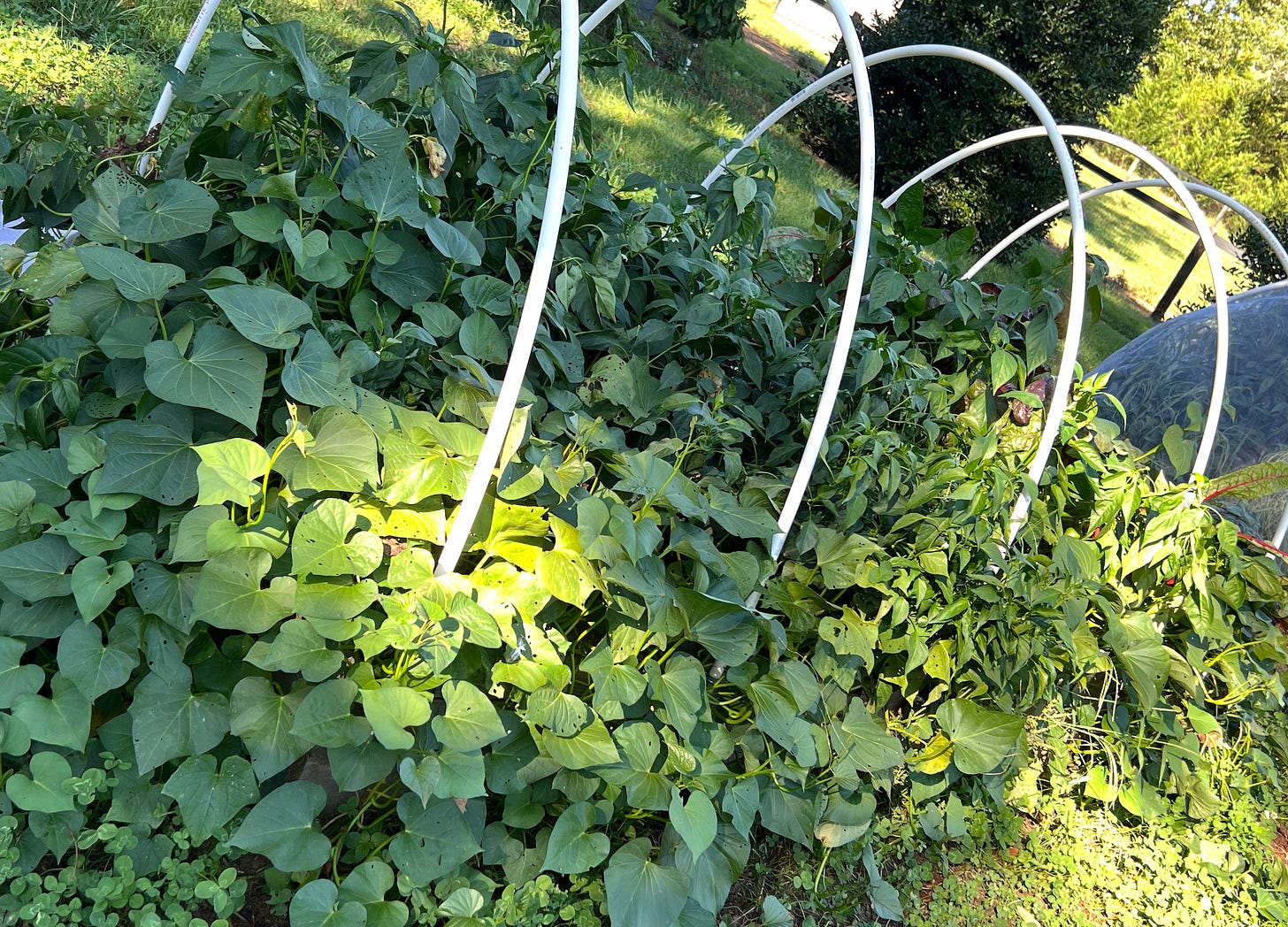
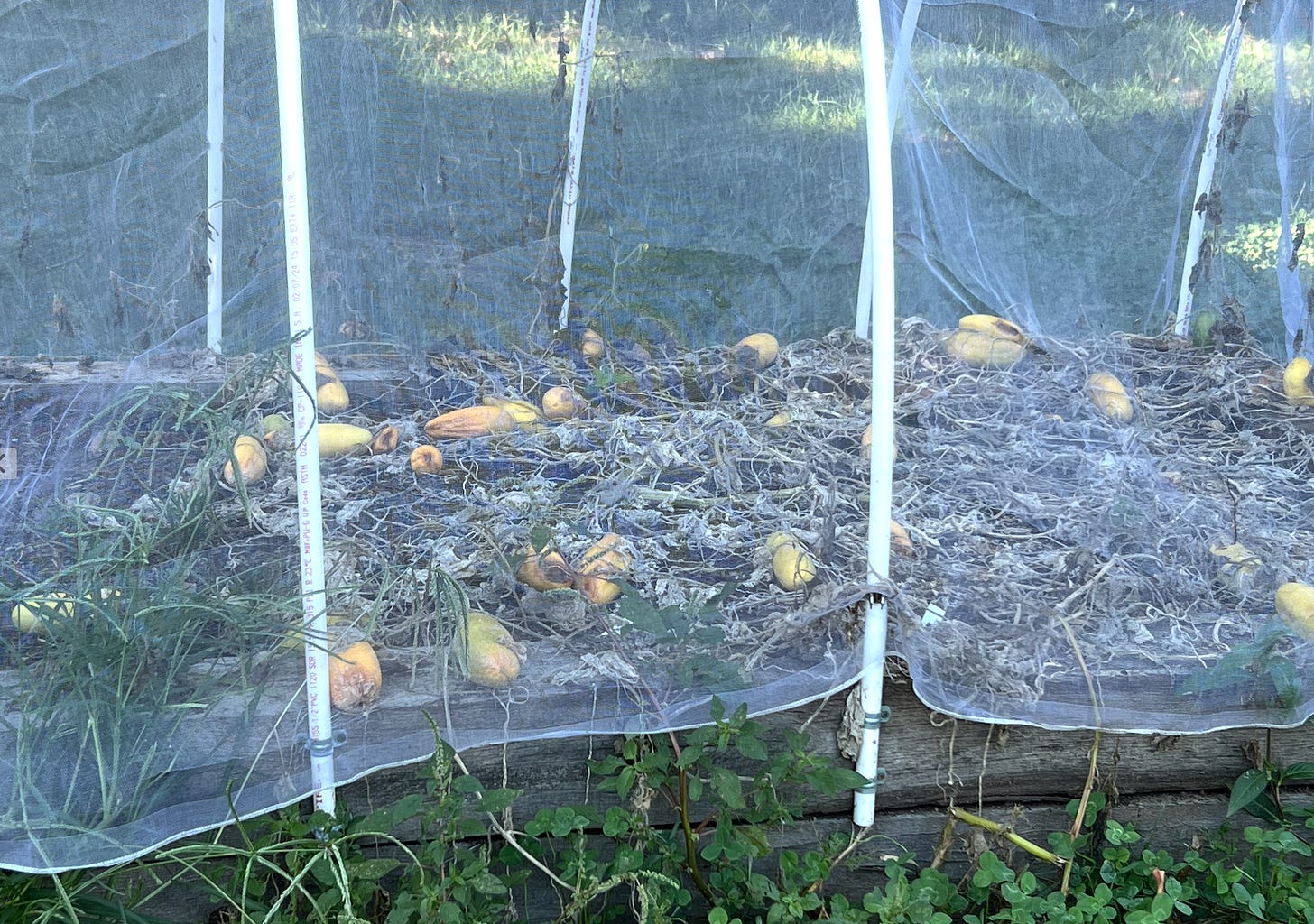

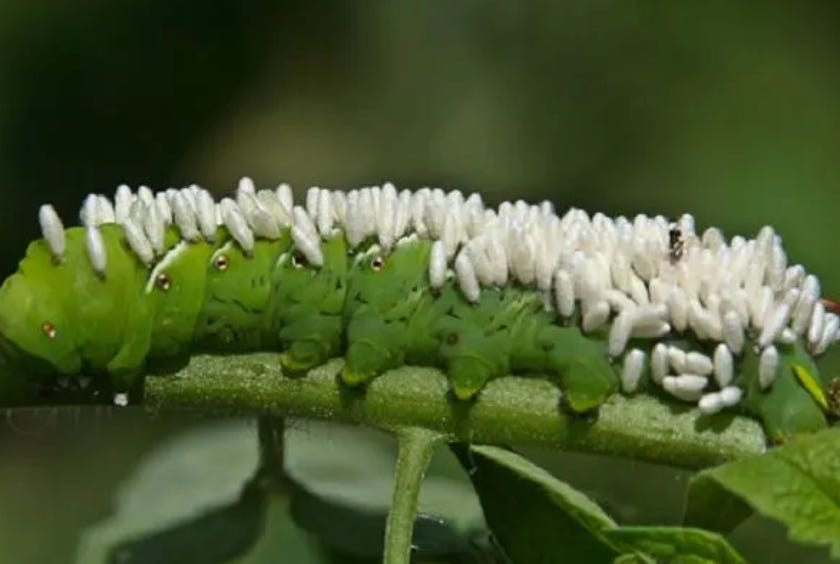
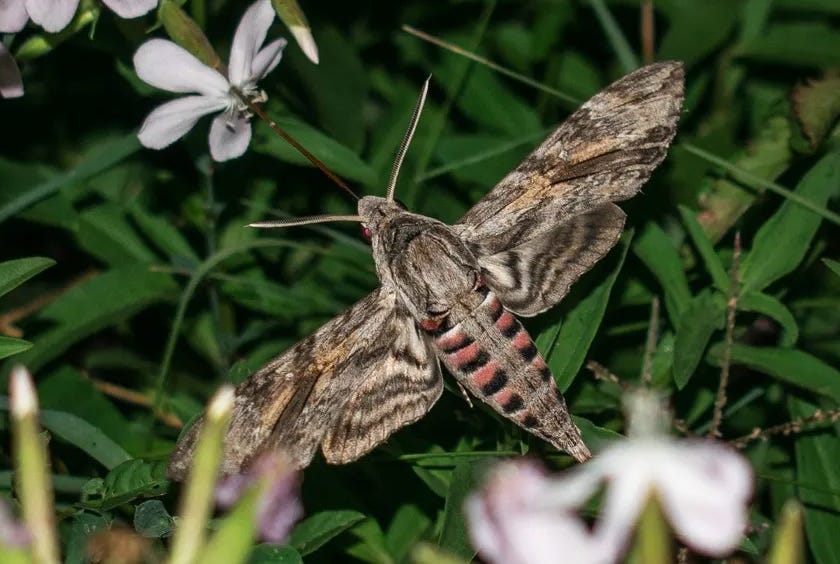
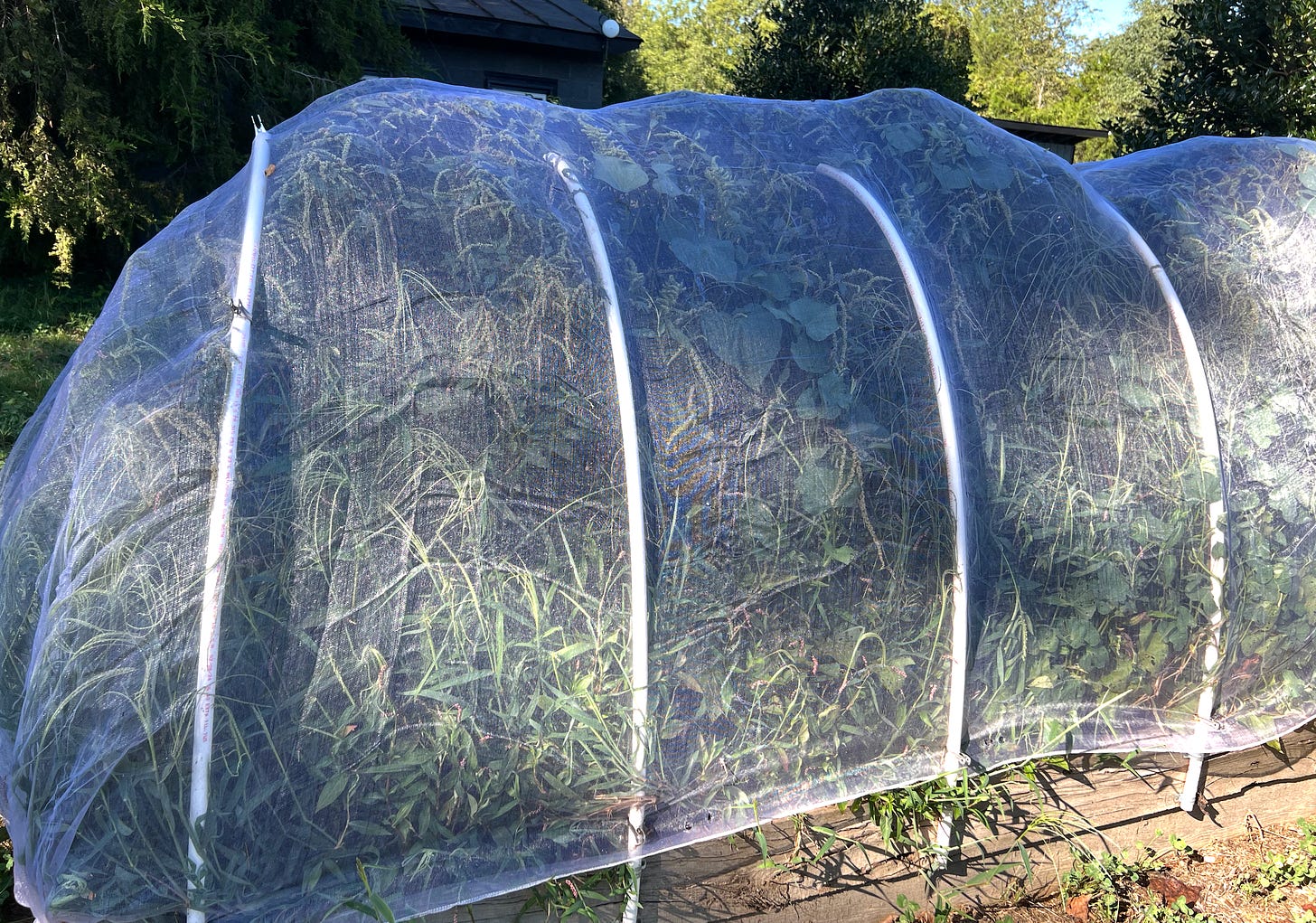
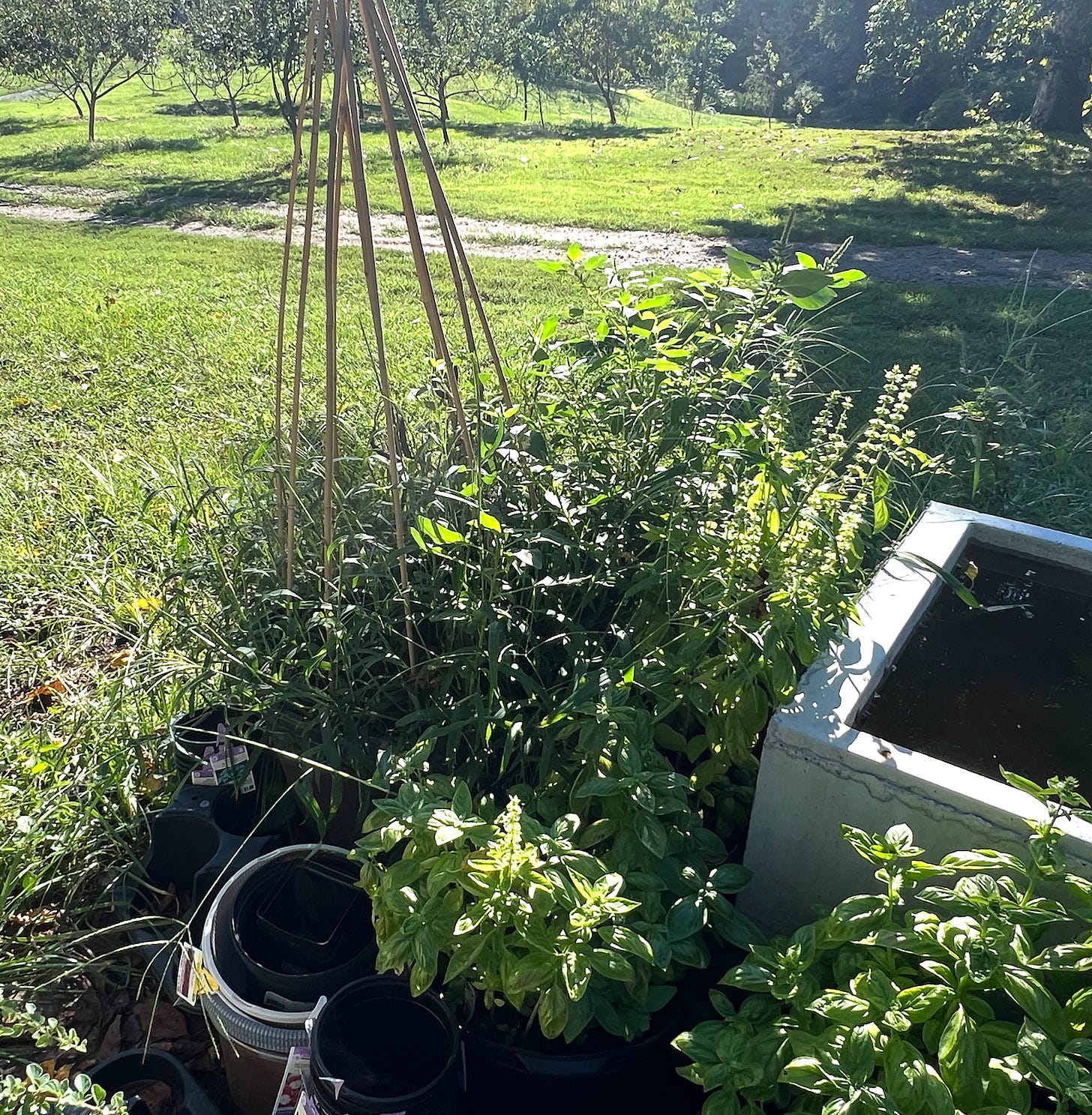
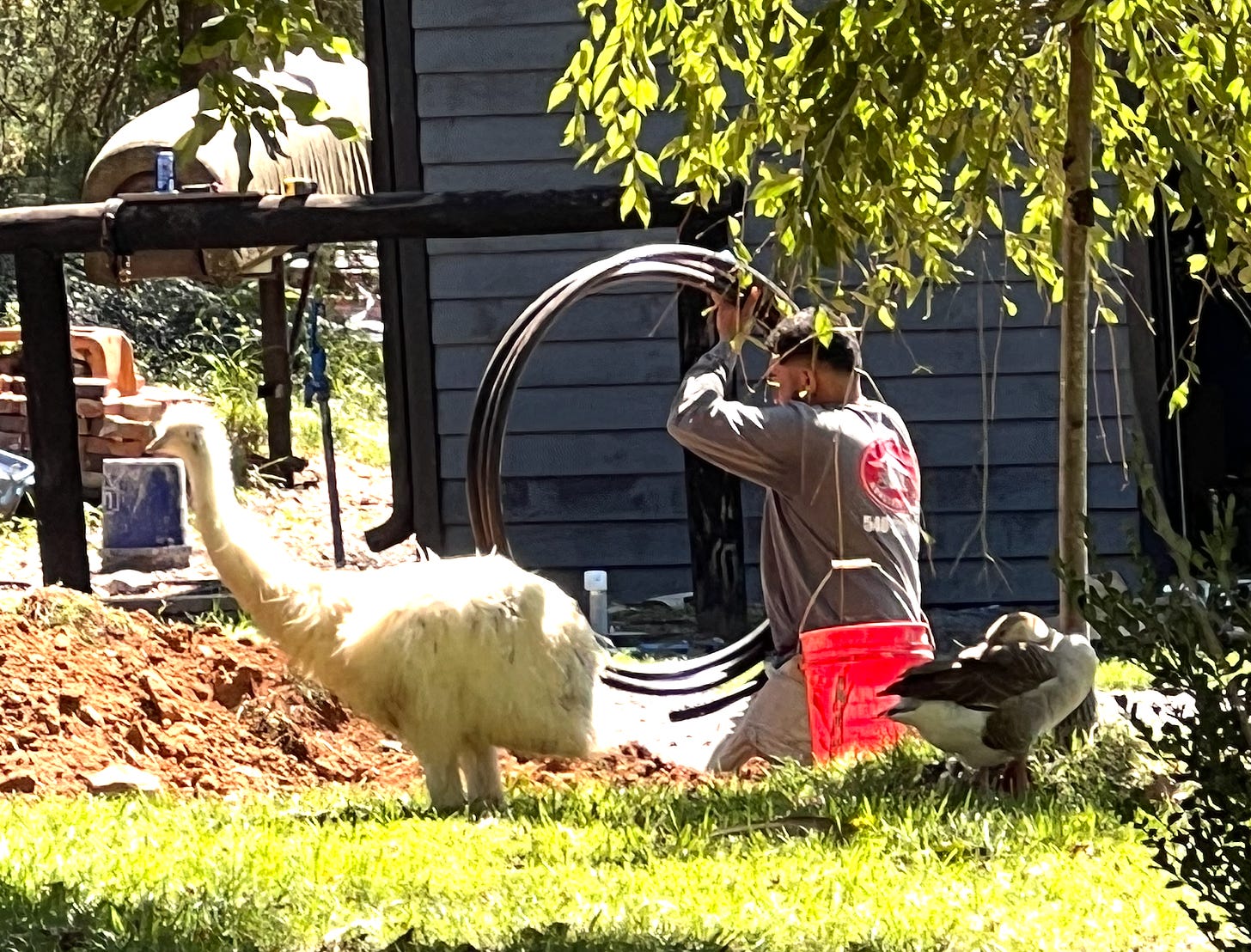
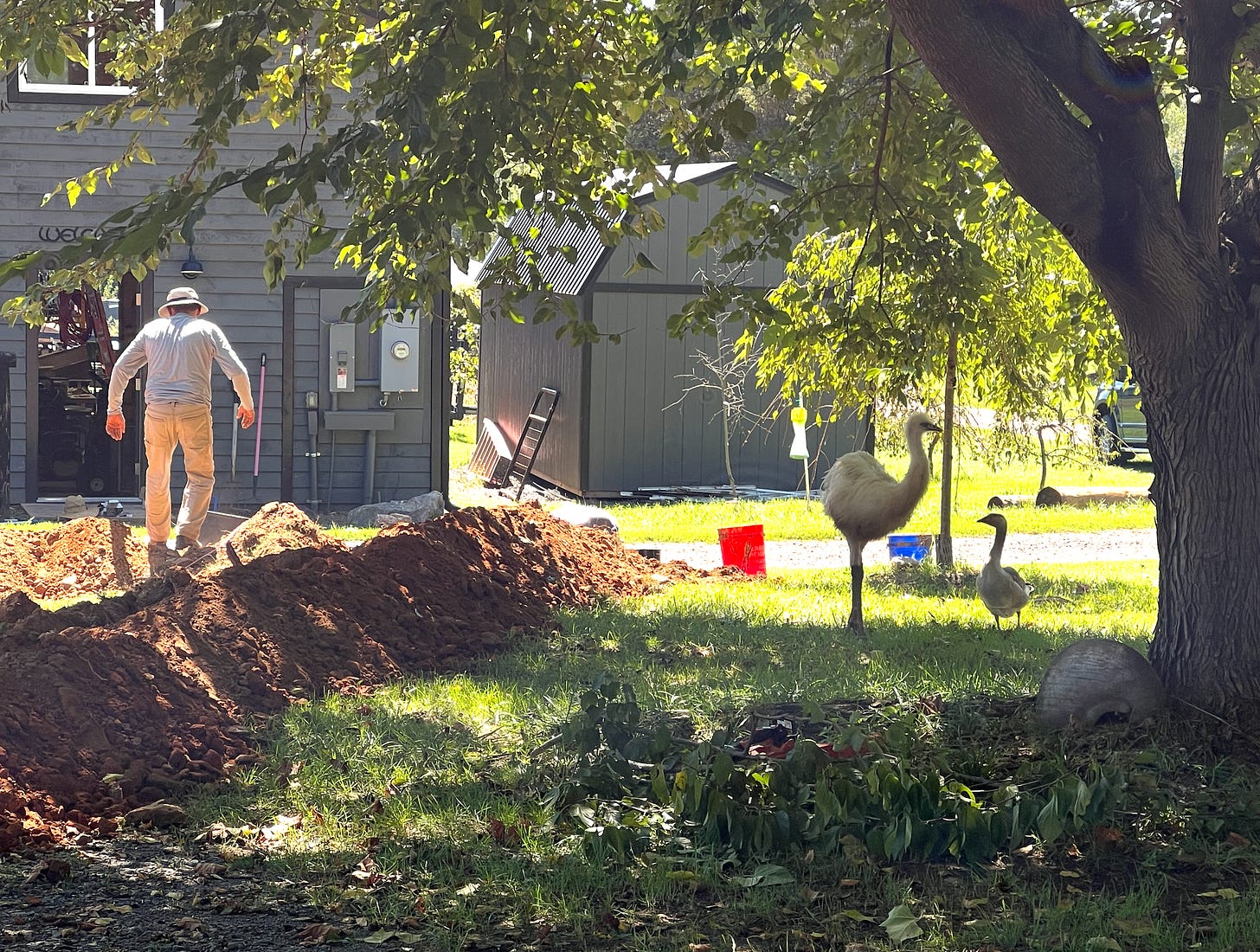
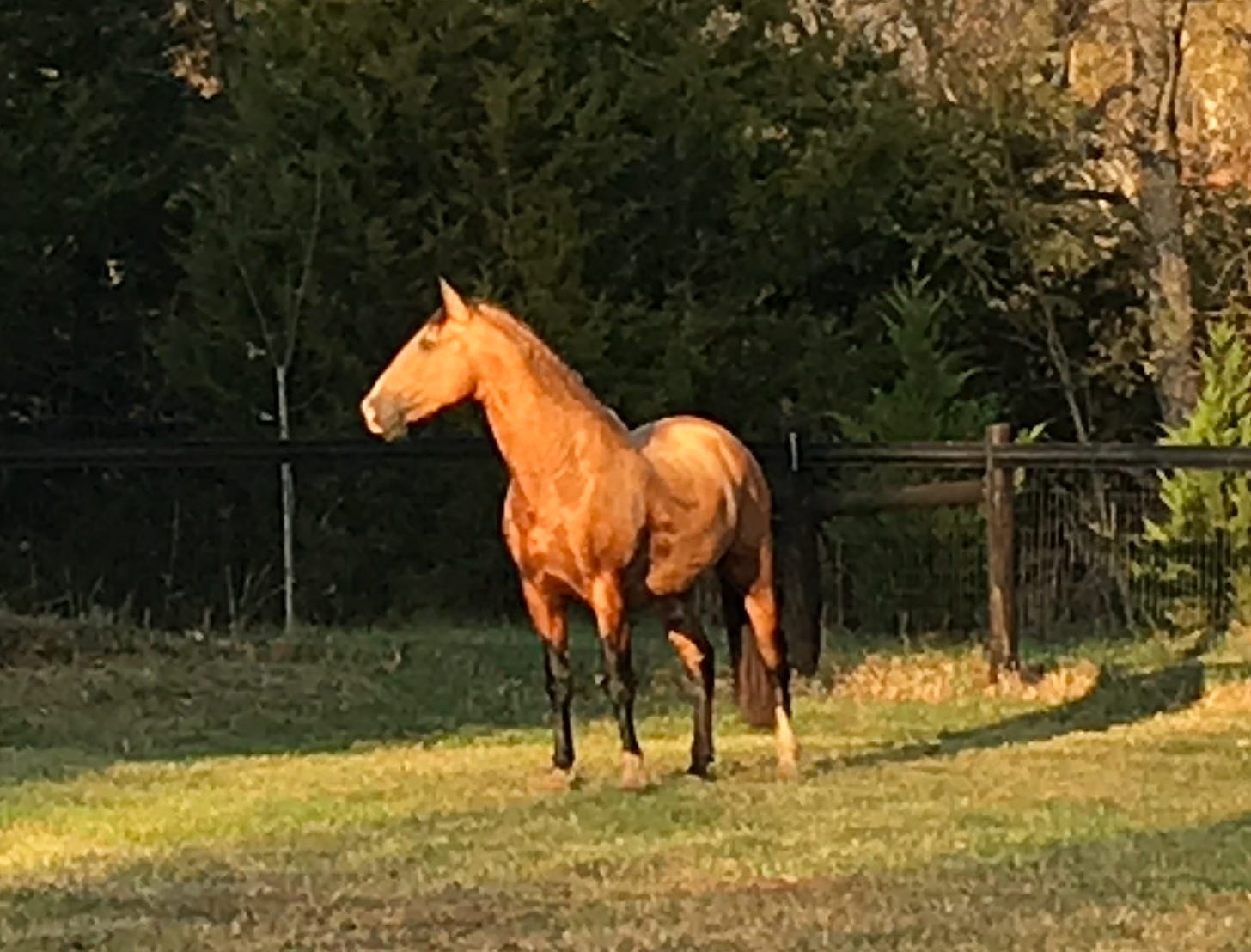









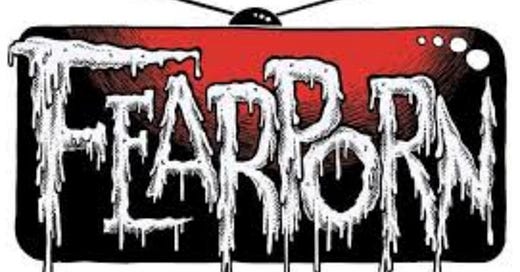

What a pleasure to open your Substack this morning and read about your homesteading trials, tribulations and successes! I definitely live vicariously through you and Jill and love all your posts! Yes, I like the political and world informative posts, but I WANT/NEED your homesteading posts! Thank you. Today was a beautiful reading.
Over here in the UK our allotment (plot size about 60x40 feet) has produced blackberries, broad beans, French beans, pumpkins, ornamental gourds, chard, beetroot, cucumber, zucchini, leeks, shallots, plums, pears. We started the year with some reasonable asparagus too. Our tomatoes down there (it's 6 minutes away from the house, below sea level) were rather pathetic probably because it gets quite windy, but our dahlia collection was and is fantastic. The only problem is the water supply, which is from cisterns so you have to water with cans by hand. Nonetheless very satisfying, and we did better than other allotment holders this year notwithstanding the late start (cold and wet), the burst of warm weather at the wrong time and then return to cold and wet!